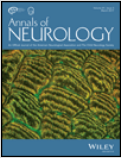 Congenital myopathies constitute a very heterogeneous set of neuromuscular pathologies. Clinically characterised by very early onset (at birth or in the first months of life), and little or not progressive muscular deficiency, these myopathies are distinguished by more or less specific lesions, visible by microscopy on muscle fragments . Hereditarily, they can be transmitted by most modes of transmission. Cap myopathy is a very rare congenital myopathy but it is easily recognizable by optical and electronic microscopy. Amorphous material accumulates in the form of clusters, with well-defined contours, on the periphery of the muscular fiber, suggesting a type of “cap”. Cap myopathy is genetically heterogeneous, involving at least three different genes.
Congenital myopathies constitute a very heterogeneous set of neuromuscular pathologies. Clinically characterised by very early onset (at birth or in the first months of life), and little or not progressive muscular deficiency, these myopathies are distinguished by more or less specific lesions, visible by microscopy on muscle fragments . Hereditarily, they can be transmitted by most modes of transmission. Cap myopathy is a very rare congenital myopathy but it is easily recognizable by optical and electronic microscopy. Amorphous material accumulates in the form of clusters, with well-defined contours, on the periphery of the muscular fiber, suggesting a type of “cap”. Cap myopathy is genetically heterogeneous, involving at least three different genes.
In an article published in March 2017, French researchers, supported by the AFM-Telethon, confirmed the involvement of the MYPN gene in cap myopathy. The MYPN gene encodes a sarcomeric protein called myopalladin. Myopalladin is preferentially expressed in skeletal and heart muscle, and interacts closely with alpha-actinin. The family described was consanguineous and came from the north of France. The clinical phenotype was moderately severe, with no associated major cardiac involvement. This confirms an observation recently reported by Japanese authors.
